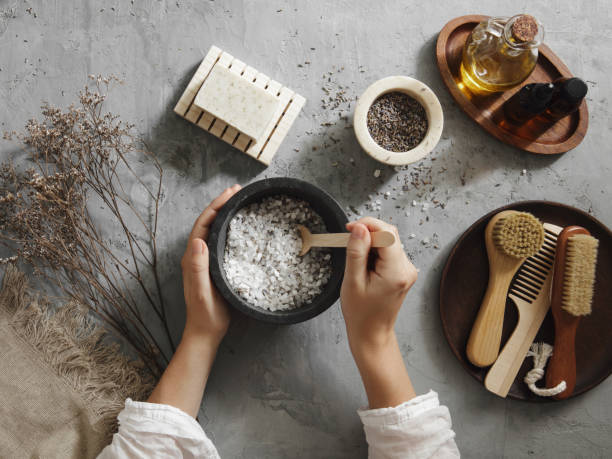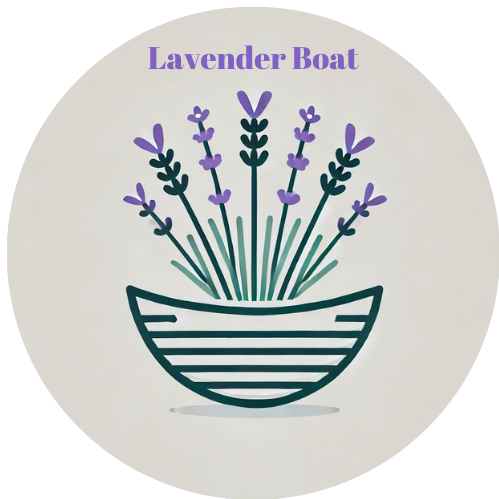When choosing the best lavender for your garden, consider your growing zone, climate, garden conditions, sunlight, growth habits, bloom colours and uses.
Listen to this guide
or read on . .
Pick Your Perfect Lavender
With over 400 lavender species and endless cultivars, selecting the right lavender varieties for your garden can seem like an overwhelming prospect. However, having the proper knowledge about your growing conditions makes the process of choosing plants much smoother. The optimal lavender for you complements your climate, soil, space, and gardening needs.
Follow this guide covering the key factors to consider when selecting lavender plants. We’ll explore characteristics like sunlight needs, growth habits, climate suitability, and disease resistance so you can make informed choices. With attention to details like your planting location and intended uses, you’ll identify lavender varieties that thrive in your unique setting. Soon, you’ll be on your way to growing a fragrant, flowering oasis perfectly tailored to you. Let’s get started picking your perfect lavender match!
Consider Your Growing Zone
Lavender species have varying cold hardiness and temperature requirements, so your USDA plant hardiness zone is an important starting point. English lavender (Lavandula angustifolia) handles cooler climates in zones 5-8. Spanish lavender (Lavandula stoechas) prefers hotter zones 7-10. For zone 3 areas, try super winter-hardy varieties like Phenomenal or Sweet Romance. Those in frosty zone 4 could opt for Grosso and Provence. For humid southern zones, go with more heat/humidity tolerant varieties like Portuguese lavender. If unsure what will thrive in your area, consult local nurseries.
Select Species for Your Climate
Beyond hardiness zones, delve deeper into your regional and microclimate. Factors like summer humidity, winter lows, wind, and precipitation patterns, all impact performance. Mediterranean lavenders like hot, dry summers with cool, moist winters. Portuguese and Spanish lavenders relish intense heat and drier conditions. Wooly lavender tolerates coastal humidity and salt spray. Work with regional growers to understand the nuances of your climate and match them with adaptive species. For example, parts of Texas need Stoechas and Spanish varieties, while Washington does well with English lavender. Think beyond zones to microclimate specifics.
Take Account of Your Garden Conditions

Lavender thrives in well-drained, dry, sandy or loamy soil. Avoid heavy, compacted clay soil that stays soggy. If your garden has mucky soil, search for lavender varieties grafted onto rootstocks that confer disease resistance, like Provence on 5N. Or plant on mounds or raised beds to improve drainage. Alkaline soils above 6.7 pH suit most lavenders best. Test soil and amend pH if needed or seek plants tolerating more acidic soil. Ensure the site has full sun exposure. Part afternoon shade in hot, humid climates is okay. But insufficient sunlight causes leggy, poor blooming. Assess these garden factors to decide which lavenders will prosper in your landscape.
Decide on Growth Habit
Lavender species exhibit different growth habits that suit various landscape needs:
– Low-mounding varieties like Munstead make excellent borders.
– Columnar tower types work well for hedges.
– Spreading types like Melissa or woolly lavender nicely cover slopes.
– Dwarf varieties suit compact spaces like rock gardens.
– Pendulous forms like Super Blue have cascading stems that look lovely in pots.
Also, decide if you prefer a trim formal look or loose informal style. Compact upright lavender types maintain tidier shaping. Let spreading species overtake areas more freely. Growth habit impacts maintenance and overall garden formality. Ensure you have space for the lavender to reach its mature shape without crowding.
Pick Flowers for Fragrance and Colour
Beyond growing traits, decide on preferred lavender flower characteristics. The range of hues includes classic purple, deepest violet, pink, white, and yellow. Spanish and Portuguese lavenders display showy “ears” atop the flower spikes. English types have tidy individual blossoms. For aromatic appeal, varieties like Melissa, Grosso, Provence, Maillette, and Super Blue have strong essential oil fragrances. Recent University of Mississippi introductions like American Blue, American Night, and American Green fuse great aromas and looks. Know your priorities for colour, shape, and scent strength to guide selection.
Plan Uses of Your Lavender

Finally, ponder how you want to ultimately use the lavender. Culinary varieties like Grosso and Provence impart optimal edible flavour. Types with high oil concentrations like Maillette suit cosmetics or aromatherapy. Bloom quantity and length are key for floral crafting. If you simply desire visual appeal, any stunning purple variety will do. Consider if you want to cut bundles to dry or leave plants intact. Any type works for relaxation or general garden beauty. But clarifying the main purposes helps focus choices and inform plant care. With some reflection on your aspirations, you’ll find varieties that align with your creative vision.
Picking your perfect lavender partners requires thought about climate, growing conditions, habits, resilience, and uses. Once homework is done, the choices become clearer. Soon you’ll be thriving alongside your customised lavender selections.
Final Thoughts:
Selecting the perfect lavender varieties for your garden is an art, and your canvas is your unique landscape. As you embark on this aromatic journey, remember that lavender is more than just a plant; it’s a sensory experience waiting to unfold. Consider these key factors to create a lavender paradise tailored to your preferences and local conditions.
Climate Compatibility: Begin with your USDA hardiness zone, but don’t stop there. Dig deeper into your microclimate to ensure your lavender thrives in your specific weather conditions.
Garden Conditions:
Lavender is particular about its soil and sunlight. Prepare well-drained soil with adequate sunlight exposure to foster healthy growth.
Growth Habits:
Choose lavender varieties that align with your garden’s layout and maintenance preferences, whether it’s a formal border, a hedge, or a cascading display.
Flower Traits: Lavender offers a spectrum of colours and fragrances. Select blooms that resonate with your aesthetic and aromatic sensibilities.
Intended Uses:
Define your lavender’s purpose. Will it be for culinary delights, essential oils, floral arrangements, or simply visual beauty? This decision guides your choice.
With thoughtful consideration of these aspects, your selection process becomes more manageable. Consult local experts if needed and explore the diverse lavender world. Soon, you’ll watch your garden bloom into a fragrant oasis uniquely suited to your taste.
Finally…
Now that you have the knowledge to choose the best lavender for your garden, it’s time to get your hands dirty and start planting! Transform your outdoor space into a lavender haven by picking the right varieties and cultivating them with care. Remember, lavender not only beautifies your garden but also tantalizes your senses with its delightful fragrance. So, don’t wait any longer—start selecting your lavender varieties today and embark on a scented journey of gardening bliss. Your personalized lavender paradise awaits, ready to bloom and enchant both you and your guests. Happy gardening! 🌿🌸





